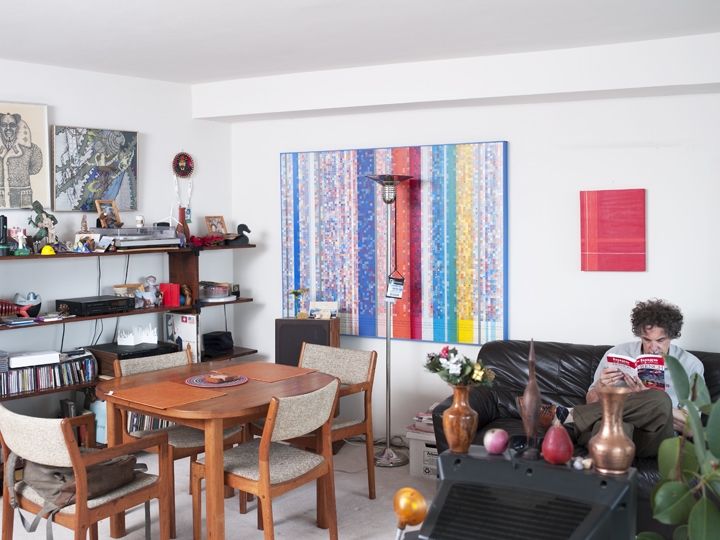
Inside Marina City is a new art project that takes a look at the lives of the individuals inside Chicago’s iconic Marina City. It hits the Art Institute September 17th, and will run until January 15th. Learn more below.
For more than two years, Iker Gil and Andreas E.G.Larsson documented the lives of residents in the non-Euclidean geometries of Bertrand Goldberg’s iconic Marina City (1959-67). Celebrating Goldberg’s original vision for affordable apartments in a central, high-density location, this revealing series of photographs provides a rare, behind-the-scenes tour of the diverse array of people and living spaces within these popular cylindrical residential towers. Shown at the Art Institute of Chicago in fall 2011, the exhibition formed a companion to the retrospective: “Bertrand Goldberg: Architecture of Invention” on view simultaneously in the Architecture and Design galleries.
Gil and Larsson’s illuminating compositions reflect their respective training and professional interests. Spanish-born Gil is a Chicago-based architect and founding principal of MAS studio whose research-based portfolio includes buildings, public spaces, as well as more theoretical projects. Larsson, a Swedish-born photographer, now residing in Los Angeles, is known for his visually expressive portraits of musicians, dancers, and other creatives featured in publications such as i-D, GQ, Nylon, and The New York Times. Drawing on their individual backgrounds, these photographs read like case studies that explore relationships between Goldberg’s rigorous modular framework for the apartment units and the gradual, informal development of interiors by their inhabitants. Unlike the vacant landscapes of traditional architectural photography or the scripted architectural scenes of such masters as Julius Shulman, Gil and Larsson’s Marina City “portraits” let the apartment dwellers speak for themselves. At the same time, however, they communicate Goldberg’s architectural ideology by drawing attention to the poetics of form and materials, calling out elements such as the sculptural quality of the concrete walls, which delineate the rooms in the units, as well as the organic forms of the balconies, which encourage the inherent play between interior and exterior spaces that have come to define the towers. The result is a rich portfolio of images that pay tribute to Goldberg’s visionary architecture and affirm his place in Chicago’s rich architectural history while placing at the fore the inhabitants who bring these spaces to life.
